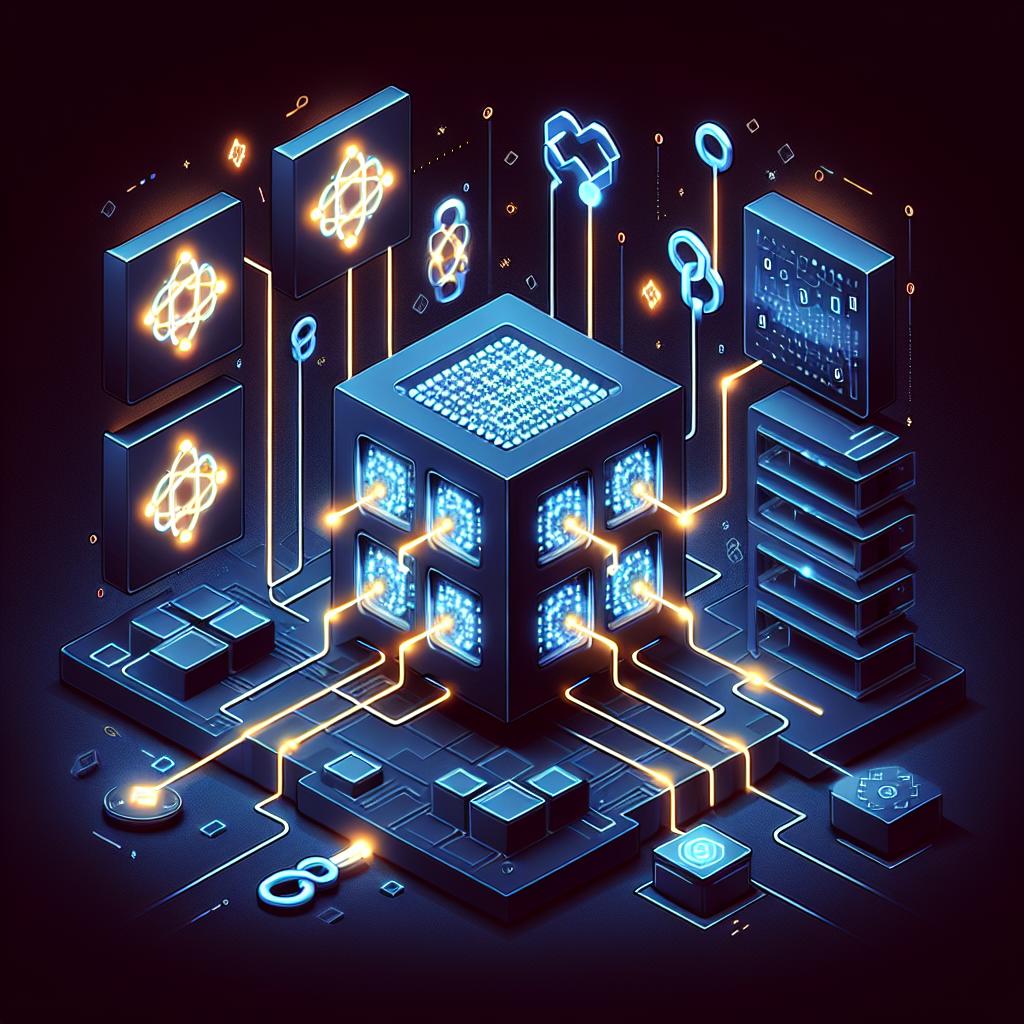Quantum computing represents a significant leap forward in computational power, with the potential to solve complex problems that are currently intractable for classical computers. As this technology continues to evolve, its implications for various fields, particularly cybersecurity and blockchain technology, are becoming increasingly important. This blog post explores the impact of quantum computing on blockchain security, examining both the potential threats and the strategies being developed to mitigate these risks.
Understanding Quantum Computing
Quantum computing leverages the principles of quantum mechanics to process information in fundamentally different ways than classical computers. While classical computers use bits as the smallest unit of data (0s and 1s), quantum computers use quantum bits, or qubits, which can exist in multiple states simultaneously due to superposition. This allows quantum computers to perform many calculations at once, making them exponentially faster for certain tasks.
The Current State of Blockchain Security
Blockchain technology relies on cryptographic algorithms to secure transactions and maintain the integrity of the distributed ledger. The most commonly used cryptographic techniques in blockchain include:
-
Public Key Cryptography: This is used to generate a pair of keys (public and private) for users. The public key is shared with others, while the private key is kept secret. Transactions are signed with the private key, ensuring authenticity and non-repudiation.
-
Hash Functions: These are used to create a unique digital fingerprint of data. In blockchain, hash functions ensure that any alteration of the data is easily detectable.
-
Consensus Mechanisms: These protocols (like Proof of Work and Proof of Stake) ensure that all participants in the network agree on the state of the blockchain.
Potential Threats Posed by Quantum Computing
-
Breaking Public Key Cryptography: The most significant threat quantum computing poses to blockchain security is its ability to break widely used public key cryptographic algorithms. For instance, Shor's algorithm can factor large integers exponentially faster than the best-known classical algorithms. This means that a sufficiently powerful quantum computer could derive a user's private key from their public key, allowing an attacker to forge transactions and compromise the integrity of the blockchain.
-
Hash Function Vulnerabilities: While current hash functions (like SHA-256) are considered secure against classical attacks, quantum computers could potentially use Grover's algorithm to perform a brute-force search for pre-images or collisions in a quadratic time frame. This could weaken the security of the blockchain, making it easier for attackers to manipulate data.
-
Consensus Mechanism Disruption: Quantum computing could also impact consensus mechanisms. For example, if a quantum computer were to gain control over a significant portion of the network, it could execute a 51% attack more efficiently, allowing it to double-spend coins or alter transaction history.
Mitigating Quantum Threats
As the threat of quantum computing looms, the blockchain community is actively exploring ways to enhance security against potential quantum attacks. Some strategies include:
-
Post-Quantum Cryptography: Researchers are developing new cryptographic algorithms that are believed to be secure against quantum attacks. These algorithms are based on mathematical problems that are difficult for quantum computers to solve, such as lattice-based cryptography, hash-based signatures, and multivariate polynomial equations.
-
Hybrid Cryptographic Systems: Implementing a combination of classical and post-quantum cryptographic algorithms can provide an additional layer of security. This approach allows for a gradual transition to quantum-resistant systems while maintaining compatibility with existing infrastructure.
-
Upgrading Existing Protocols: Blockchain networks can proactively upgrade their protocols to incorporate quantum-resistant algorithms. This requires careful planning and consensus among network participants to ensure a smooth transition without disrupting the existing system.
-
Awareness and Education: As quantum computing technology advances, it is crucial for developers, businesses, and users to stay informed about the potential risks and the measures being taken to address them. Education and awareness can help foster a proactive approach to blockchain security.
Conclusion
The advent of quantum computing presents both challenges and opportunities for blockchain technology. While the potential for quantum attacks on blockchain security is a serious concern, ongoing research and development in post-quantum cryptography and hybrid systems offer promising solutions. As the landscape of technology continues to evolve, it is essential for the blockchain community to remain vigilant and adaptable, ensuring that the integrity and security of decentralized systems are maintained in the face of emerging threats.



